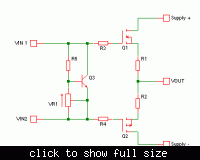harikrishnam
Junior Member level 3

hi to everybody,i very much interest to know how to design FET based amplifier.i know BJT design and op-amp design but FET design i don't know.i searched in the net according to their methods some parameters are required but those parameters are not available in datasheet if any body knows please help me.my major application is audio amp like equalizer or preamp or power amp.






